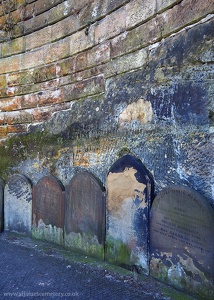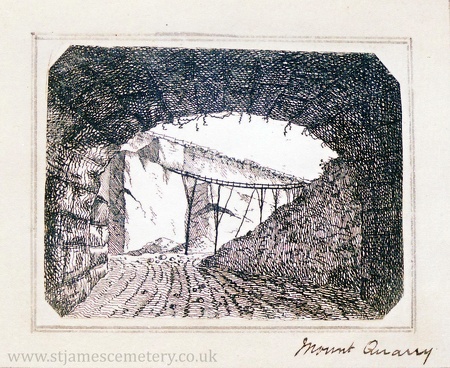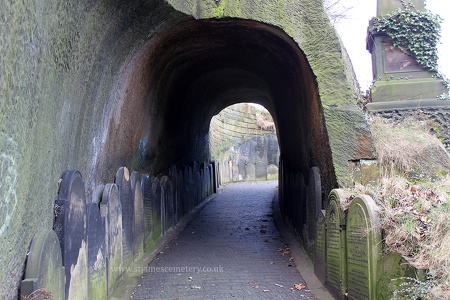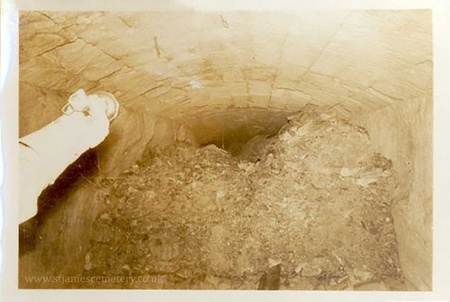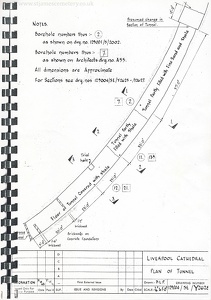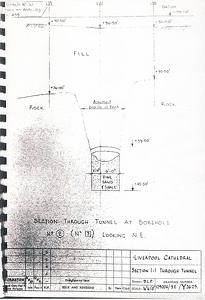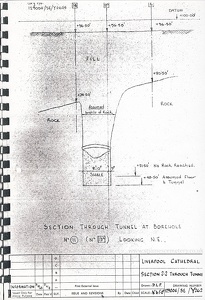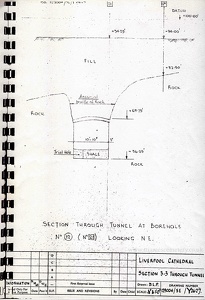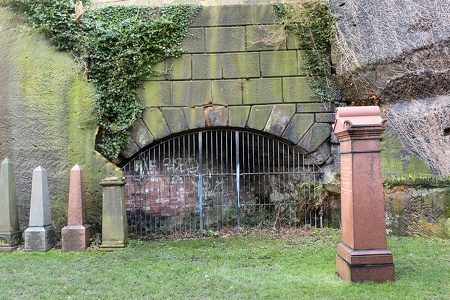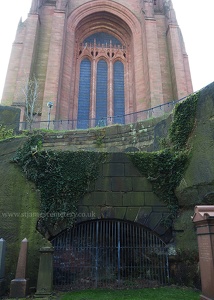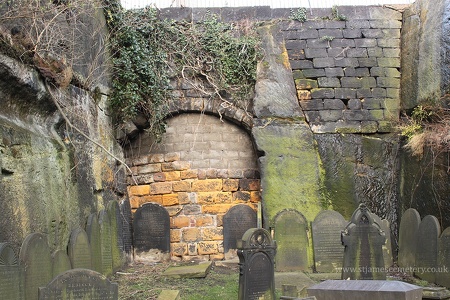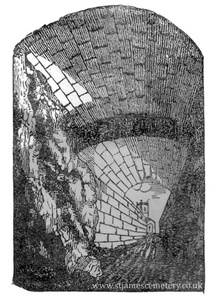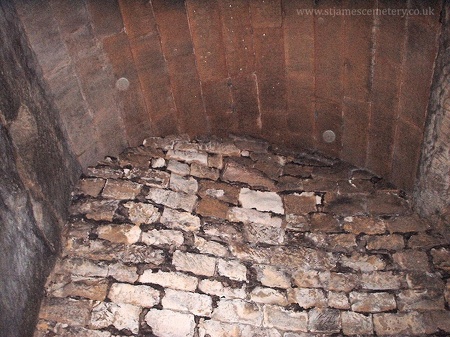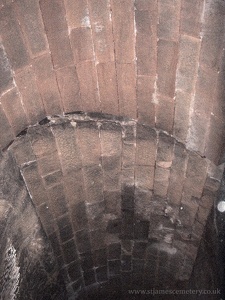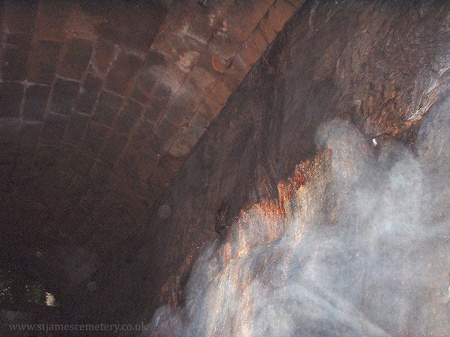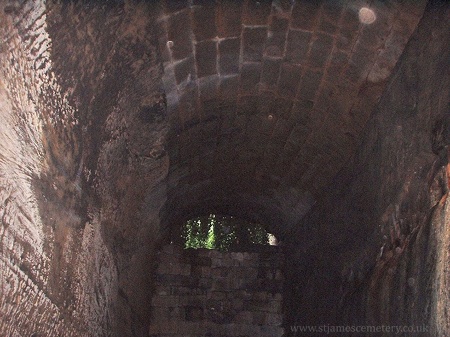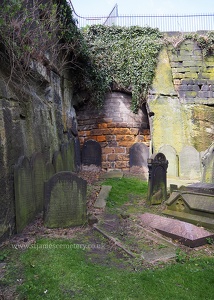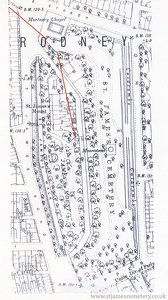
There are three tunnels leading into (or from) St James' Cemetery.
The first one is the tunnel virtually every visitor will use. It is about 8 feet wide and 12 feet high and follows a downward slope from just to the left of the main Cathedral entrance. It has been called a 'natural arch' by some Ordnance Survey maps. This may or may not be true. Certainly the chisel marks which are plainly evident on the walls and roof point to the fact that this tunnel has been 'worked'. Maybe the tunnel is 'natural' but the need was felt to widen it in years gone by.
It is likely that the tunnel extended further than today, there is some evidence of stone being removed from the area. In 1832 it was written:
Lighted by only one opening to the surface of the ground, rendering the subterranean passage sufficiently sombre and frightful to inspire the legendry muse with many a rich fireside tale of fairies, sprites and hobgoblins, which, according to the chronicles of those gone by times, performed their nightly vigils on, or near this spot, to the great terror of every schoolboy and nursery-maid who had the temerity to venture through this darksome way.
Today, tombstones line the sides of this tunnel. Visitors are recommended to pay close attention to the walls, where the names of long dead stonemasons have carved their names.
The second tunnel is bricked off and heads underneath the cathedral. In his book, 'The Building of Liverpool Cathedral', Peter Kennerly writes:
The preparation of the foundations for the West Front was hampered by the presence underground of an old collapsed tunnel, which had been excavated in the eighteenth century to give access to the quarry.
Engineers drilled several boreholes to determine how far this tunnel stretched. A report from November 1963 discusses the problem of building mass concrete foundations on the North side of the site because of the tunnel. It mentions two brick blast walls built during the 1939-45 war when the tunnel was reputed to have been used to store stained glass windows from the Cathedral. The diagrams drawn from these investigations are attached below.
Currently it is not known where this tunnel leads.
The third and final tunnel is facing the previous one. We have a little more information on this tunnel and its use. It was almost certainly used by hearse traffic during the years as a cemetery. It is reported that this tunnel emerged at the junction of Rodney and Duke St, near to the home of Dr Gill. In 1853 Brooks wrote:
The tunnel had two 'eyes' to admit light and air, and on each side over the entrance was the figure of a Lion carved in stone.
This tunnel was blocked off in 2002. Images taken by Marc Williams prior to this are shown below.
Source: © Mike Faulkner

